A slippery problem
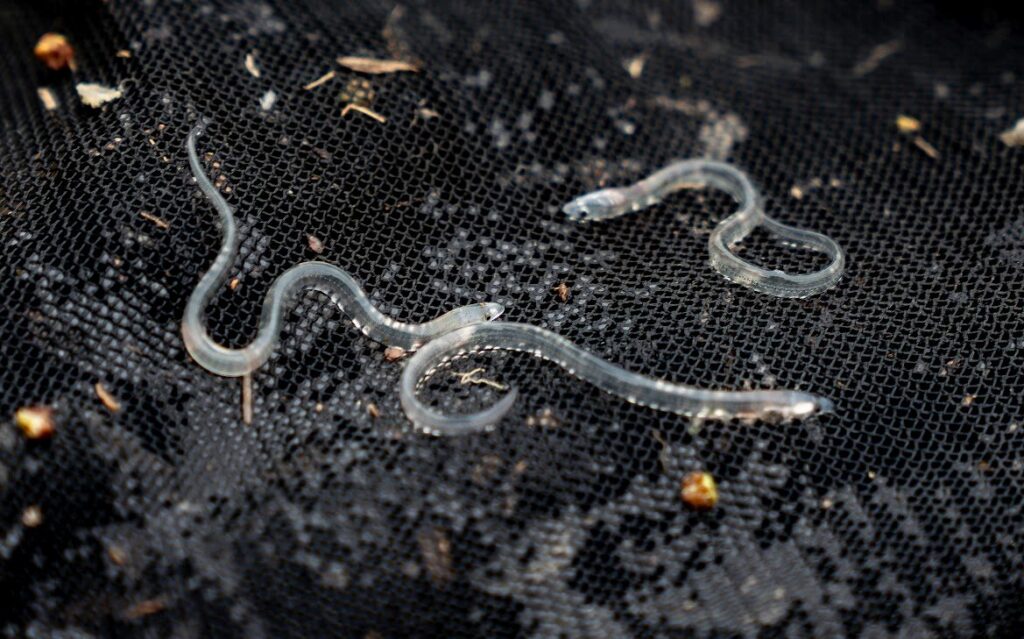
A United Nations initiative aims to promote the recovery of the European eel population in the Mediterranean. Is aquaculture helping or hindering?
The future of the European eel (Anguilla anguilla), an iconic fish species and much appreciated in Mediterranean cuisine, is currently at risk. But a management plan that includes a partial closure of eel fisheries each year, a complete ban on recreational eel fishing and the setting-up of a monitoring network to identify effective management measures could help reverse the situation.
Eels are critically endangered and face threats such as climate change, habitat loss, pollution and overfishing all along their migration routes, which originate in the Sargasso Sea and span a distribution range from the Mediterranean to northern Europe. In 2020, the migration of young European eel to freshwater habitats, a crucial stage in their lifecycle, reached an all-time low.
The General Fisheries Commission for the Mediterranean (GFCM) of the Food and Agriculture Organization of the United Nations (FAO) responded to the situation and pioneered a comprehensive research programme in nine Mediterranean countries between 2020 and 2022.
The outcomes of this work, published in the report European eel in the Mediterranean Sea: Outcomes of the GFCM research programme, provide a detailed overview of eel fisheries, habitats and the biological and ecological features of local stocks. The report also offers a comprehensive look at the current management and conservation measures, and performs a model-based appraisal of the core measures.
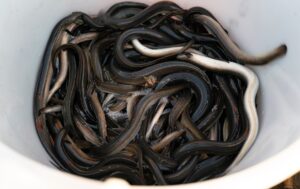
Eel catch, Orbetello, Italy
The report identified lagoons as a crucial habitat for eels in the Mediterranean Sea. However, lagoons face substantial challenges, including climate change, fishing pressure and pollution.
Habitat loss, poor water quality and pollution are also evident in other eel habitats, such as rivers and estuaries.
The research also found that, despite the numerous management measures by fisheries in place, some of them (such as closure periods and bans on fishing of certain stages) showed poor harmonisation and were often insufficiently aligned to local conditions, reducing their efficiency.
The decline of eels impacts fishers as catches have exponentially decreased.
“Before me, my father and grandfather used to fish here. We all fish to make a living. Unfortunately, now we fish very little. We used to fish a lot,” says Adriano Deiana, an eel fisher in Sardinia, Italy.
The declining resource also results in fishers leaving their jobs, with subsequent losses in the traditional knowledge, management and environmental stewardship that fishers themselves were providing.
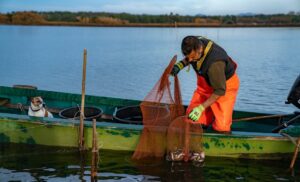
Catching eels in Orbetello Lagoon, Italy
A coordinated management plan for recovery
The dire situation underlines the need for action on multiple levels.
“The European eel, the habitats that host its different life stages and the livelihoods it sustains require action and protection on all fronts: biological, environmental, socioeconomic,” says Elisabetta Betulla Morello, one of the editors of the report and a GFCM Fishery Resource Officer.
“Cooperation is essential for identifying and implementing adequate measures, not only to manage fisheries but also to protect the environment and the socioeconomic setting revolving around this species,” she added.
Starting with the transitional measures already in place since 2021 and based on the results of the research programme, in 2022 the GFCM adopted a multiannual management plan for European eel in the Mediterranean Sea. It includes a partial closure of eel fisheries for six months each year, with alternative options for its implementation. It also imposes a total, permanent ban on recreational fishing of European eel at all stages – glass eel, yellow eel and silver eel, and in all habitats – freshwater, brackish and marine. These measures were reinforced in 2023 with additional precautionary measures for the protection of glass eels.
Another key part of the plan is to set up a monitoring network involving fishers and scientists across the Mediterranean to identify effective management measures, tailored to specific situations and implemented by all stakeholders. Workshops have already brought fishers, scientists and administrators together, sharing case studies and best practices, with a view to replicating them elsewhere.
A socioeconomic study forms part of the research programme’s next phase, which will also expand the existing habitat databases and collect information to appraise management measures.
The ultimate goal is to ensure the conservation of the species and the preservation of the heritage of artisanal fisheries within Mediterranean coastal communities.
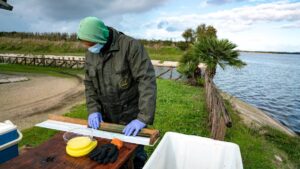
Eel survey, Fogliano, Italy
Aquaculture remains problematic
Eel aquaculture in Europe is, in one sense, not an alternative to catch fishing because it depends on the capture of wild eels, or at least their seed. Although the problem is being worked on, no reliable method of breeding European eels in captivity has yet been found and so Anguilla anguilla cannot yet be said to be domesticated.
The report European eel in the Mediterranean Sea includes a chapter on eel aquaculture. Of the nine partner countries in the GCFM survey, only four reported aquaculture activities: Italy (reporting the most significant annual aquaculture production of 464 tonnes in 2019), Greece, Egypt and Tunisia (where eel “aquaculture” is limited to collecting seed from the sea to stock the basins of inland dams that cannot be reached naturally by migrating elvers). The latter has not been included in the report’s aquaculture statistics.
Three forms of rearing techniques are used for European eel aquaculture: semi-intensive culture pond systems, intensive recirculation aquaculture systems and an extensive culture system called valliculture, which has been traditionally practised in the coastal lagoons and brackish waters of the Mediterranean region, especially in Italy.
The most significant European eel aquaculture production in the Mediterranean occurs in Italy. Reported data covers 2008 to 2019. Production rose from 510.4 tonnes in 2011 to a maximum of 750 tonnes in 2015, before dropping to 464 tonnes in 2019.
Greece reported aquaculture activities for the same period, 2008 to 2019, recording a maximum production of 428.2 tonnes in 2009 and a minimum of 128 tonnes in 2018, while its most recently reported annual production was 146 tonnes.
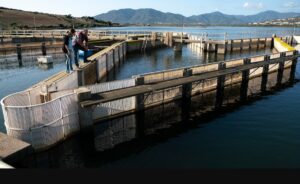
Fish barrier, Sardinia
Fragmentary aquaculture data were documented in Egypt, where European eel aquaculture has been practised since at least 2010 and the current level of annual production is just four tonnes.
Two important research projects have been funded in Europe recently: the international research project PRO-EEL, supported by the European Commission, which aims to breed European eel in captivity and ITS-EEL, a research and innovation project carried out by the Technical University of Denmark (DTU Aqua) and aquaculture industry partners.
PRO-EEL involves standardised protocols for the production of high-quality gametes (eggs and sperm), viable embryos and feeding larvae of European eel. ITS-EEL aimed to advance emerging technologies to breed European eel and scale up larval culture to enhance offspring survival, and sustain the feeding larval (leptocephalus) stage.
The research has yielded some positive results, the GFCM report says, but “…due to the complex reproductive physiology of eels, many advances will have to be made before commercial production of European glass eels in captivity can be achieved.”
Overall, then, eel aquaculture in Europe reached a peak in 2000 at 10,663 tonnes. This is compared with just 1,480 tonnes in 2019, as recorded by FAO FishStat, or 1,100 tonnes according to the Federation of European Aquaculture Producers.
European eel in the Mediterranean Sea: Outcomes of the GFCM research programme (FAO, 2023) can be found online here:
www.fao.org/documents/card/fr/c/CC7252EN

